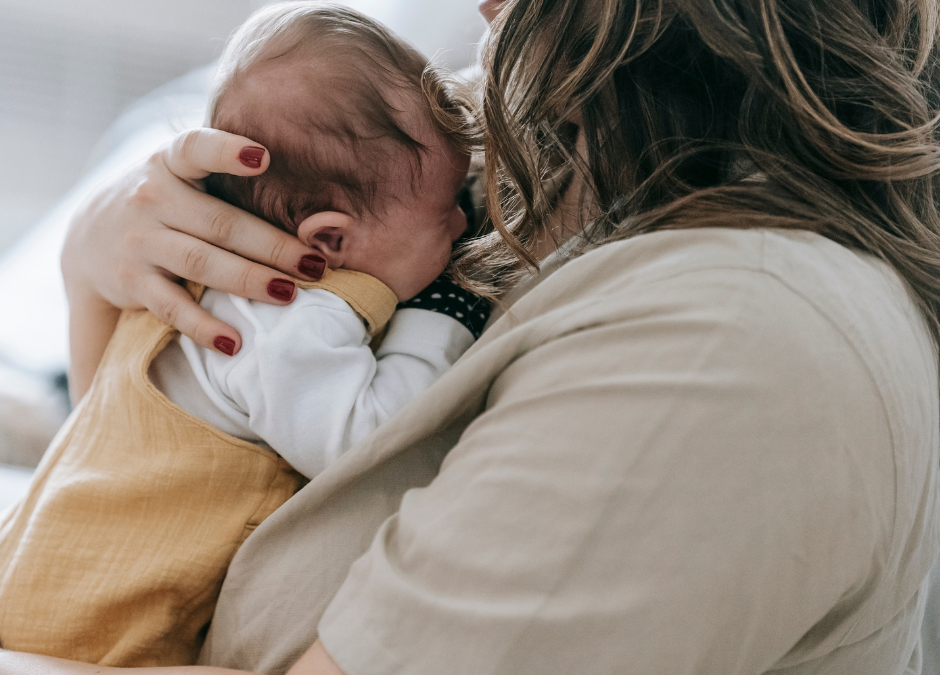For the first time since 2016, the American Academy of Pediatrics (AAP) has updated their sleep guidelines for infants. According to the AAP: “Each year in the United States, approximately 3500 infants die of sleep-related infant deaths, including sudden infant death syndrome (SIDS), ill-defined deaths, and accidental suffocation and strangulation in bed.” A national education campaign advocating putting infants on their backs to sleep resulted in a substantial decline in infant sleep related deaths in the a990’s, but the rates have remained stagnant since 2000.
“We’ve made great strides in learning what keeps infants safe during sleep, but much work still needs to be done,” said Rachel Moon, MD, FAAP, lead author of the statement and technical report, generated by the AAP Task Force on Sudden Infant Death Syndrome and the AAP Committee on Fetus and Newborn.
“A baby’s death is tragic, heartbreaking and often preventable. If we’ve learned anything, it’s that simple is best: babies should always sleep in a crib or bassinet, on their back, without soft toys, pillows, blankets or other bedding,” said Dr. Moon, professor of pediatrics at the University of Virginia School of Medicine.
The AAP Policy statement will be published in the July 2022 Pediatrics issue. [It is already available online.] There is an accompanying technical report that provides evidence base and documents the strength of evidence for each recommendation in the policy statement.
Here are several AAP guidelines from the report:
- Sleep Position: The infant should be placed on their back to sleep. Babies who sleep on their backs are much less likely to die of SIDS than babies who sleep on their stomachs or sides. While some may be concerned that babies will choke when on their backs, the baby’s airway anatomy and the gag reflex keep that from happening. It is recommended that even babies with gastroesophageal reflux (GERD) should sleep on their backs.
- Sleep Location: The AAP recommends that infants sleep in the same room as parents for at least the first 6 months. The AAP stresses that co-sleeping under any circumstances is not safe for infant sleep. “We know that many parents choose to share a bed with a child, for instance, perhaps to help with breastfeeding or because of a cultural preference or a belief that it is safe,” said Dr. Rebecca Carlin. Dr. Carlin coauthored the guidelines and technical report from the AAP Task Force on Sudden Infant Death Syndrome and the AAP Committee on Fetus and Newborn, in a statement. “The evidence is clear that (co-sleeping) significantly raises the risk of a baby’s injury or death,” said Carlin, an assistant professor of pediatrics at Columbia University Irving Medical Center. “For that reason, the AAP cannot support bed-sharing under any circumstances.”
- Sleep Environment: The infant should sleep on a firm, level surface. If the surface is slanted, it should be a 10% incline or less. This reduces the risk of suffocation or wedging/entrapment. The sleep environment should be bare. Soft objects, loose bedding, crib bumpers, toys and other objects should not be in the baby’s sleep area. This helps reduce the risk of SIDS, suffocation, entrapment/wedging, and strangulation. The AAP guidelines state that weighted blankets, weighted sleepers or weighted swaddlers should NOT be used. Ensure the sleepwear is enough to keep the infant from being cold, but not so much that the infant overheats. The infant should not wear a hat to bed – in fact, it is recommended that infants NOT wear hats indoors unless it is during the first hours of life or they are in a neo-natal intensive care unit [NICU]. Never put an infant to sleep on a sofa, couch or other piece of soft furniture. Infants often fall asleep in car seats, strollers, swings, infant carriers and infant slings. These can obstruct a baby’s airways, so when baby falls asleep in them, they should be moved to lie on their back on a flat, firm surface.
- Commercial Devices: There are several products on the market that claim to reduce the risk of SIDS or other sleep related issues. The AAP warns against use of these. “Using products claiming to increase sleep safety may create a false sense of security” for parents that “could result in reducing infant safe sleep practices,” said Alison Jacobson. Alison Jacobson is the CEO of First Candle, a national nonprofit committed to the elimination of SIDS and other sleep-related infant deaths through education and advocacy.
Here are the AAP guideline and other websites for more information:
- The News Release: American Academy of Pediatrics Updates Safe Sleep Recommendations: Back is Best (aap.org)
- The Policy Statement: Sleep-Related Infant Deaths: Updated 2022 Recommendations for Reducing Infant Deaths in the Sleep Environment | Pediatrics | American Academy of Pediatrics (aap.org)
- The Technical Report: Evidence Base for 2022 Updated Recommendations for a Safe Infant Sleeping Environment to Reduce the Risk of Sleep-Related Infant Deaths | Pediatrics | American Academy of Pediatrics (aap.org)
If you are interested in becoming a Certified Newborn and Infant Childcare provider, check out the Nanny Institute’s online training and certification program.


Recent Comments